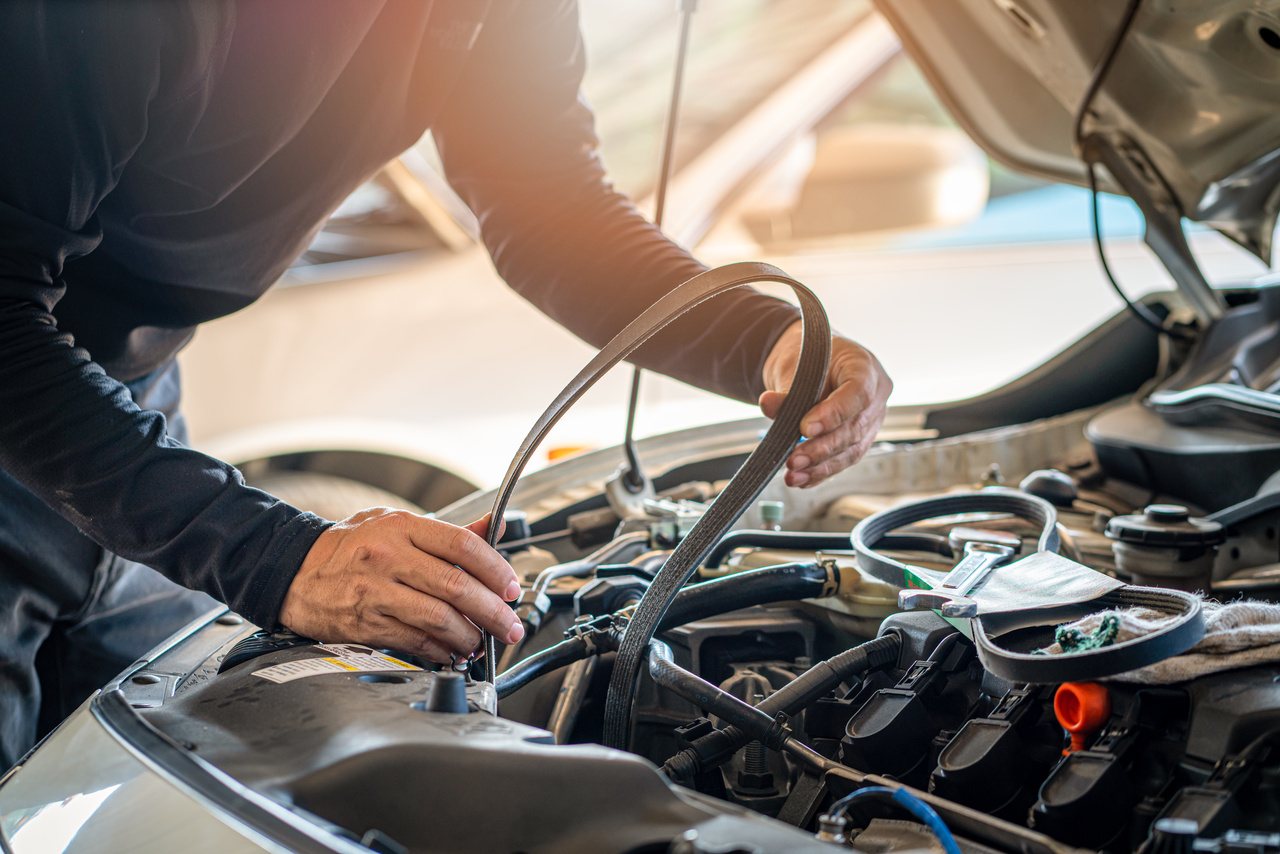
At Paul’s Automotive in Sacramento, CA, we understand that vehicle maintenance can sometimes feel overwhelming. With so many components to keep track of, it’s easy to overlook the importance of your vehicle's belts and hoses. But did you know that these small parts play a huge role in keeping your car running smoothly and safely? Let’s dive into what automotive belts and hoses do, why regular inspections and replacements are important, and how taking care of them can prevent costly breakdowns.
What Do Automotive Belts and Hoses Do?
Belts are essential components in your vehicle’s engine that help drive multiple systems, such as the alternator, water pump, air conditioning compressor, and power steering. The most common belts are the serpentine belt, timing belt, and V-belts. These belts work in harmony to transfer power from the engine’s crankshaft to various components, ensuring that your vehicle runs efficiently.
Hoses, on the other hand, are responsible for carrying fluids (coolant, oil, brake fluid, etc.) throughout your car’s engine and other systems. Hoses help regulate temperatures, keep fluids circulating properly, and ensure that your car performs at its best. Common types of hoses include radiator hoses, coolant hoses, and vacuum hoses.
Together, belts and hoses keep your engine and systems running efficiently. If one fails, it can lead to overheating, power loss, or even a complete engine failure.
Why Regular Inspection and Replacement Matter
Like any other part of your vehicle, belts and hoses are subject to wear and tear over time. Exposure to heat, friction, and the elements causes them to degrade. A worn-out belt can snap, and a damaged hose can leak or burst, leading to severe engine damage and costly repairs. Regular inspection of these parts helps catch issues before they turn into bigger problems.
Here are the key reasons why it’s essential to inspect and replace your belts and hoses periodically:
- Prevent Breakdowns: A failed belt or hose can lead to immediate breakdowns. In some cases, such as a timing belt failure, it can cause catastrophic engine damage, leaving you with an expensive repair bill and a vehicle out of commission.
- Avoid Overheating: The serpentine belt drives the water pump, which circulates coolant throughout the engine. If the belt fails, the engine may overheat, causing serious damage. A cracked or leaking hose can also cause coolant to leak, leading to the same result.
- Maintain Performance: Worn-out belts or hoses can cause your vehicle’s systems to work inefficiently, resulting in reduced power, poor fuel economy, and sluggish performance. Replacing old belts and hoses helps ensure your car runs smoothly.
- Save Money: The cost of replacing a worn-out belt or hose before it breaks is much lower than paying for repairs that result from neglecting them. Avoid the high costs of engine or cooling system damage by staying ahead of necessary replacements.
How Often Should You Replace Belts and Hoses?
The general recommendation is to have your belts and hoses inspected every 30,000 to 60,000 miles, depending on your vehicle’s make and model. However, certain factors like driving conditions, climate, and vehicle age can affect how frequently these parts need to be replaced. It’s always best to follow the manufacturer’s recommendations found in your owner’s manual, and work with an experienced auto repair shop like Paul’s Automotive for professional advice.
Signs That Your Belts and Hoses Need Attention
If you notice any of the following signs, it’s time to have your belts and hoses inspected or replaced:
- Squealing or grinding noises: This often signals that the serpentine or timing belt is worn or loose.
- Overheating engine: This could be a sign of a coolant hose leak or a failed belt.
- Cracks, fraying, spongy feel, swollen appearance or glazing: Look for visible wear and tear on your belts and hoses, which can be a sign that they need to be replaced.
- Leaking fluids: If you notice coolant or oil leaking from your hoses, it’s time for a replacement.
- Loss of power steering or air conditioning: A malfunctioning belt can affect these systems.
Why Choose Paul’s Automotive for Your Belts & Hoses Service?
At Paul’s Automotive, we’re committed to helping you keep your vehicle in top condition. Our expert mechanics offer comprehensive belt and hose inspections and replacements to ensure that your car runs smoothly and efficiently. We understand that maintenance can sometimes feel like a hassle, but we strive to make the process easy and stress-free. In fact, we include a complimentary belt and hose inspection with every 5,000 or 7,000 mile service.
Special February Offer: 10% Off Labor for Belts & Hoses Services!
To help you stay on top of your vehicle’s maintenance, we’re offering 10% off labor for all belts and hoses services throughout the month of February! It’s the perfect opportunity to get your vehicle’s belts and hoses inspected and replaced, ensuring that your car runs at its best—without breaking the bank.
Don’t wait until it’s too late! Schedule an appointment today at Paul’s Automotive in Sacramento and take advantage of this limited-time offer. Our skilled technicians are here to help you maintain the health and performance of your vehicle, ensuring that you can hit the road with confidence.
Book Your Appointment Today!
Ready to give your car the care it deserves? Contact Paul’s Automotive at (916) 555-1234 or visit our website to schedule an appointment. Remember, February is the month for savings—so act now to take advantage of the 10% labor discount on belts and hoses services!
Keep your vehicle running smoothly with Paul’s Automotive—your trusted partner in auto repair in Sacramento, CA. We look forward to serving you!